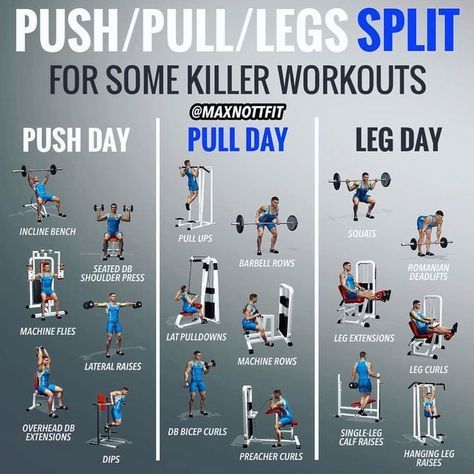When it comes to achieving your fitness goals, having a well-structured workout split is key. A workout split refers to how you divide your training sessions throughout the week, allocating different muscle groups or exercises to specific days. By tailoring your routine to suit your individual needs, you can optimize your workouts and maximize your results.
Understanding Your Goals
The first step in building the perfect workout split is understanding your fitness goals. Whether you want to build strength, increase muscle mass, lose weight, or improve endurance, your goals will determine the type of exercises and training frequency that are most effective for you.
Strength and Power
If your primary goal is to build strength and power, focusing on heavy compound exercises such as squats, deadlifts, bench presses, and overhead presses is crucial. To maximize strength gains, incorporate these exercises at the beginning of your workouts when you are fresh and able to lift heavy weights.
Hypertrophy and Muscle Building
For those aiming to build muscle mass, a workout split that focuses on hypertrophy training is ideal. This involves performing exercises targeting each major muscle group with higher volume and moderate weights. Splitting your muscle groups into different training days allows for greater focus and optimal muscle recovery.
Weight Loss and Fat Burning
If your goal is to lose weight and burn fat, incorporating both strength training and cardio exercises into your workout split is essential. By alternating between resistance training and high-intensity cardiovascular exercises, you can maximize calorie burn, build lean muscle mass, and boost your metabolism.
Endurance and Conditioning
For individuals looking to improve endurance and overall athletic performance, a workout split that emphasizes cardiovascular exercises such as running, cycling, or swimming is beneficial. Additionally, incorporating circuit training or interval training can help increase both cardiovascular fitness and muscular endurance.
Choosing the Right Split
Once you have identified your goals, it’s essential to choose a workout split that suits your schedule and allows for adequate rest and recovery. Here are some popular workout splits:
Full Body
A full-body workout split involves training all major muscle groups in a single session. This is an excellent option for beginners or individuals with limited time. Performing compound exercises that target multiple muscle groups simultaneously can be highly effective. Aim for full-body workouts two to three times per week, allowing at least one day of rest between sessions.
Upper/Lower Split
An upper/lower split divides your training sessions into upper body and lower body workouts. This split allows for more focused training and allows you to work on different muscle groups with greater intensity. Aim for two upper body and two lower body workouts per week, with one or two rest days in between.
Push/Pull/Legs Split
The push/pull/legs split divides your workouts into pushing exercises (e.g., chest, shoulders, triceps), pulling exercises (e.g., back, biceps), and leg exercises. This split is highly effective for individuals seeking balanced muscle development. Aim for three to four training sessions per week, with one rest day between each workout day.
Body Part Split
For advanced individuals or those focusing on specific muscle groups, a body part split is a popular choice. This split involves targeting one or two muscle groups per training session. For example, dedicating one day to chest and triceps, another day to back and biceps, and so on. Aim for four to six training sessions per week, allowing one or two rest days.
Adapting and Progressing Your Split
Building the perfect workout split is a continuous process that requires adaptation and progression. As you become more experienced and your fitness goals evolve, it’s important to reassess and modify your workout split accordingly. Here are some tips to keep in mind:
Listen to Your Body
Pay attention to how your body responds to different exercises and training frequencies. If you feel overly fatigued or experience frequent muscle soreness, it may be a sign that you need to adjust your split or incorporate more rest days.
Progressive Overload
To continue making progress, gradually increase the intensity, volume, or load of your workouts. This could involve adding more weight to exercises, increasing the number of sets and reps, or reducing rest time between sets.
Periodization
Consider implementing periodization into your workout split. Periodization involves dividing your training into specific phases, each with varying focuses, intensities, and training techniques. This method allows for better adaptation, prevents plateaus, and reduces the risk of overtraining.
Conclusion
Building the perfect workout split is a personalized process that depends on your individual goals, preferences, and lifestyle. By understanding your objectives, choosing the right split, and adapting as needed, you can create a routine that is tailored to maximize your results. Remember to listen to your body, gradually progress, and explore different training techniques to ensure continued growth and improvement. With dedication and consistency, you’ll be on your way to achieving your fitness goals.
